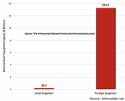manqiangrexue
Brigadier
1. It's not an unreasonable assumption based on large trends. You don't need to be a top scientist with precise understanding of the lithography techniques to see the large trend that China overcomes every ban with its ingenuity. That is a large trend and everything now suggests that it will continue.Im making this question because people here are making an assumption that huawei is going to be able to continue to produce its 5nm chips moving forward, without having a clue as to how.
2. 5nm eventually, but I don't think anyone is talking about that coming into play very soon. People are mostly talking about SMEE's 28nm DUV and EUV projects set to complete in 2021 and 2022 which would be capable of making 7nm chips and likely 5nm chips going forward. So this isn't "without having a clue as to how" but rather piecing together the evidence to take an educated guess. On the other hand, you're the person who has no rational reason (other than that it's really hard) but believes based on sheer desire that China can't do world-leading lithography despite its current unprecedentedly aggressive push and record of overtaking global leaders in tech.
3. Your question is still stupid because it's not meant to be answerable with the public information available, at least not in greater detail than above. It takes a scientist with top clearance among China's national semiconductor projects to answer with a plan covering meaningful detail; such a person does not exist on this forum nor would he be inclined to divulge such information if he did. You asked this question because it's impossible to answer with what we have and you hope that that would make your opposite assertion look right... at least until a year or so later then it's proven wrong. It is like a caveman asking his fellow cavemen at night to explain the scientific mechanism by which the sun rises in the morning and if they can't, then they should believe his assertion that it will not rise tomorrow... until it does.
Last edited:




